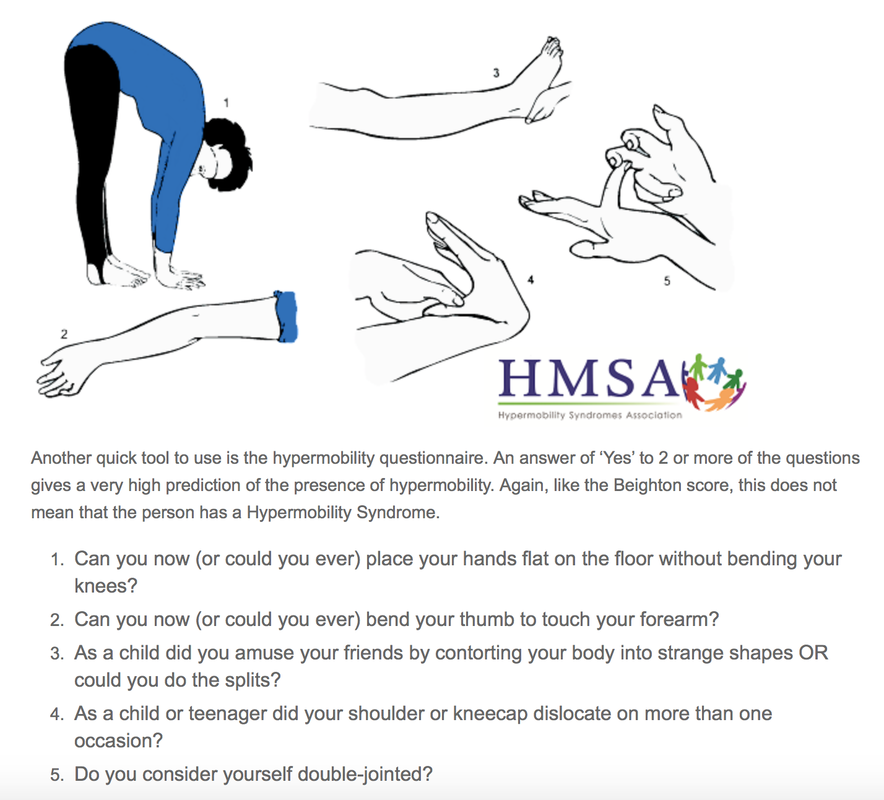In ballet class, I delighted at how far I could stretch. Between classes my teacher used to do this sort of “Egyptian” movement with an ash tray in his hand – up, down, around – turning his arm in crazy directions and never spilling a drop of the overflowing butts and ashes. We begged him to teach us the trick, and I was the only one who could consistently turn my shoulder and contort my arm like that. For a long while, I could pick up my foot and rotate my hip in such a way as to touch my little toe to my ear. It was fun. It was weird. It got me attention. In my thirties I finally learned there was a name for what I could do. I was Hypermobile.
I dislocated my right shoulder for the first time at 17. My dad and I were driving out to Indiana for my freshman year of college. We stayed overnight in a hotel with a pool. I dove in, and under the water my shoulder felt a little funny. I came up and it looked a bit weird, too. “You ok?” my (also Hypermobile) dad asked. “Yeah, my shoulder feels weird.” “Well, just bang on it and see if it goes back to normal. That happens to me sometimes.” I did, and it did, and that was that.
Only it wasn’t. In the ensuing years, it started to happen more and more often. It wasn’t very painful, just odd, but slowly over time I started limiting my activities as my understanding of what I had to do to throw it out grew. Tennis? No overhead smashes. Swing dance? Left arm turns only. Stuff in a high cabinet? Someone else get it, please. I began a long, slow series of protective behavior that I physically needed to learn to cope with this.
Finally, one day in my late twenties, it happened at work. I stretched at my desk and it went out. I couldn’t get it back in, so I went up to the school nurse and asked her to pop it in for me. She freaked out and called the paramedics. That was the beginning of the end. It was out for over an hour and the pain became excruciating. Somewhere in the next decade surgery was strongly suggested. Six weeks in a sling with a toddler in my world wasn’t happening anytime soon, so I put it off again and again, until it started going out in my sleep.
I had some control over what I did to protect it while I was awake, but asleep? No hope for that. So finally, I made the time to have reconstructive shoulder surgery – about 20 years after that dive into the pool.
Twenty years of habitual protection did not want to leave, even when the PT pronounced me back at 89% of my original mobility. I was extremely fearful of trusting my shoulder again. I now had freedom and permission to go back to tennis, swing dance, yoga, all those activities I had limited, but I was scared half to death.
Thankfully, at this point I had started studying Alexander Technique. I learned first hand that one of the biggest benefits of AT is that it can teach you to lovingly let go of habits that no longer serve you. I learned to trust my body, to let go of gripping my arm to my side, to raise it up overhead without fear. I learned to appreciate my habit, to thank it lovingly for protecting me, and to let it go.
Without the pause, the letting go of the fear, and the choosing a new direction to move forward, I’d probably still be protecting that arm.
In my teaching practice, I see this so often. People get new joints and they are afraid to trust using them. I see folks with new hips and knees still limping like they did before surgery, because they haven’t learned to trust their new “bionic” selves. Some folks never will. It’s a huge internal conflict (with a lot of fear involved) to let go of protecting ourselves around physical trauma. The psychophysical tools of Alexander Technique can help.
Do you have old injuries or physical trauma?
Do you still protect yourself from repeating that trauma?
What habits can you thank for showing up, and then let go of today?
*If you’d like to read more about Hypermobility studies in the UK,
click here for a link to the article on the efficacy of AT and Hypermobility.

 RSS Feed
RSS Feed